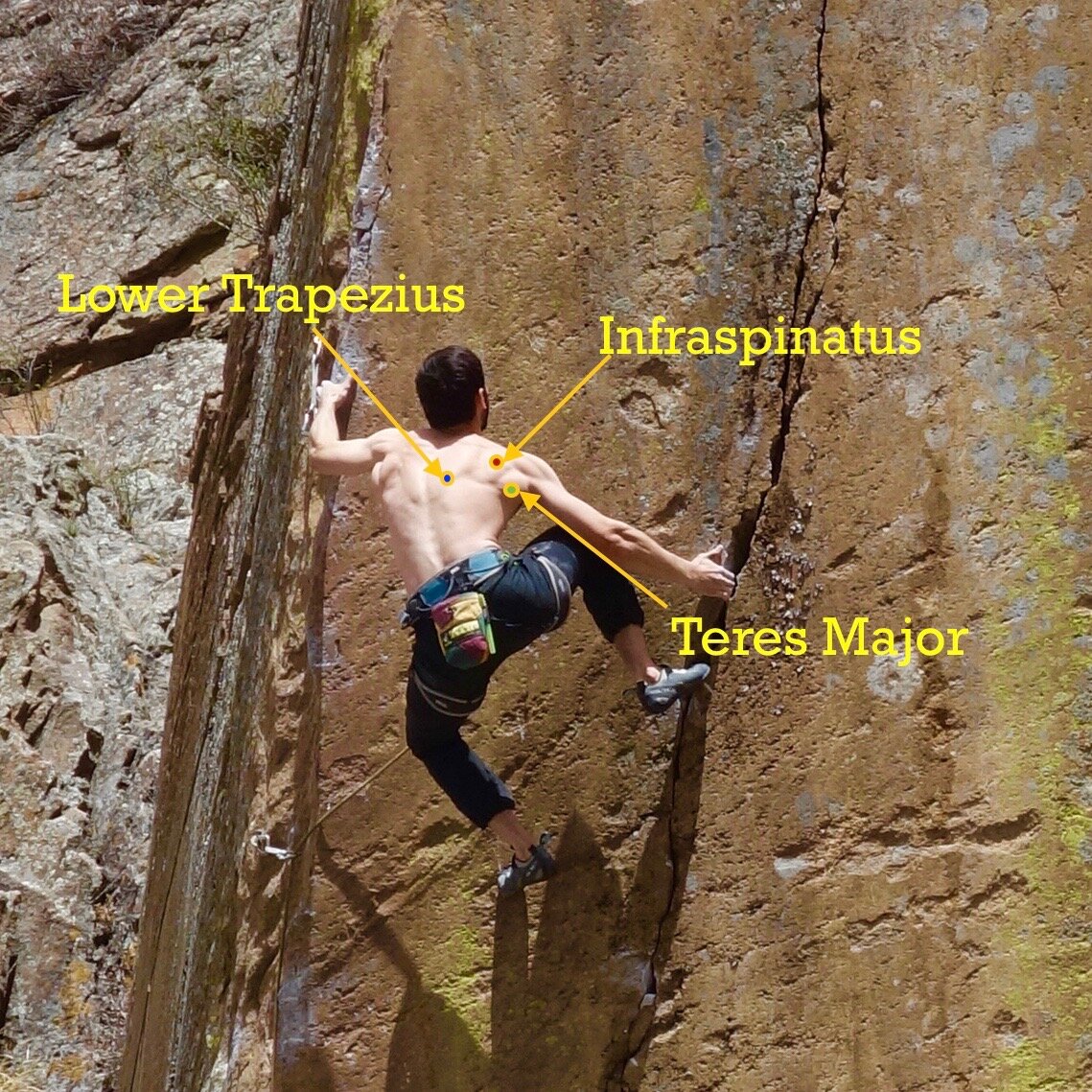Scapular mobility, strength and function for athletic performance
As a climbers and overhead athletes, we put significant stress on our shoulders doing the activities we love. Maintaining parascapular strength as well as scapular mobility is one key to long-term shoulder health. This image of a climber highlights 3 key shoulder considerations for athletes. The Rotator Cuff muscles which help hold our shoulder in proper alignment during motion are first on our list. The Infraspinatus is an external rotator, and, along with the other rotator cuff muscles, helps hold the humeral head in proper neutral glenohumeral joint alignment during deceleration when throwing, and while pulling down hard with climbing. It keeps the humerus from sitting forward in the joint, and helps prevent shoulder impingement. The rotator Cuff needs focused strengthening, which can be easily done with bands (see video).
Secondly, the scapula needs to properly rotate upwards when you raise your arm so that you avoid shoulder impingement, which causes pain and will ultimately lead to tendon breakdown. The three key muscles for Scapula upward rotation are the Upper Trapezius, the Lower Trapezius, and the Serratus Anterior. Guess what? Your Upper Trap is probably dominant, so you need to focus on strengthening the Serratus and the Lower trap. This video gives you suggestions for Lower Trap and Rotator Cuff strengthening. https://www.youtube.com/watch?v=wlvrmlPJrpw).
Finally, The Teres Major is a shoulder internal rotator, and it is one of the most over developed muscles in climbers, tennis players, and swimmers. The internal rotators pull us into that dreaded forward shoulder posture, which looks bad and also can make you more prone to injury. The internal rotators include the Teres Major, Pecs, and Lats. In addition to proper stretching and professional bodywork, these muscles can be treated with the Wave Tool, a Lacrosse ball, or the foam roller to release myofascial tension and trigger points.

